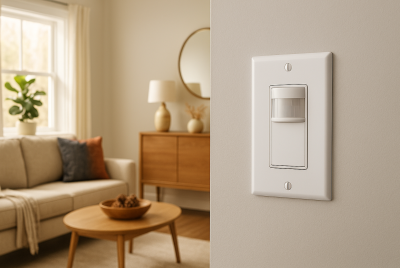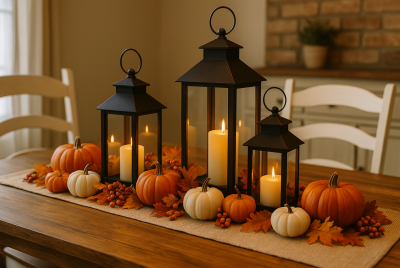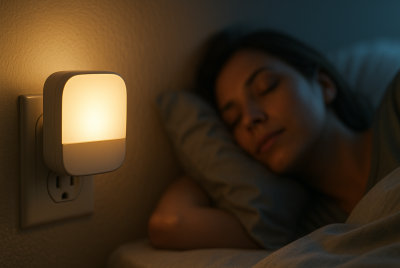Maximalist Layering: 7 Tips to Master the Art of Bold Decor
We may earn a commission for purchases made using our links. Please see our disclosure to learn more.
Dull, neutral spaces can create an atmosphere that feels lifeless and disconnected from the residents. Although minimalism has been the prevalent design style for many years, it often removes the warmth and personality that make a space inviting. The Maximalist Layering approach provides a lively alternative—embracing vibrant colors, rich textures, and personal narratives. By carefully combining patterns, materials, and meaningful items, this method transforms any room into a lively, emotionally resonant setting. It’s a design philosophy that honors individuality and turns your home into a true reflection of your complete self.
What Is Maximalist Layering?
Maximalist layering is a bold and creative way to decorate your space. It’s about adding color, texture, and personality to every corner of a room. Instead of keeping things simple or bare, it invites you to fill your home with pieces you love.
You’ll often see bright colors, fun patterns, and a mix of materials like velvet, wood, or woven fabric. Art, furniture, books, and decor are layered together to create a rich, full look. Nothing has to match perfectly. It’s more about mixing styles and telling your story through the things you display.
Every item has meaning. Every layer adds warmth. Maximalist layering helps you build a space that feels joyful, personal, and truly your own.
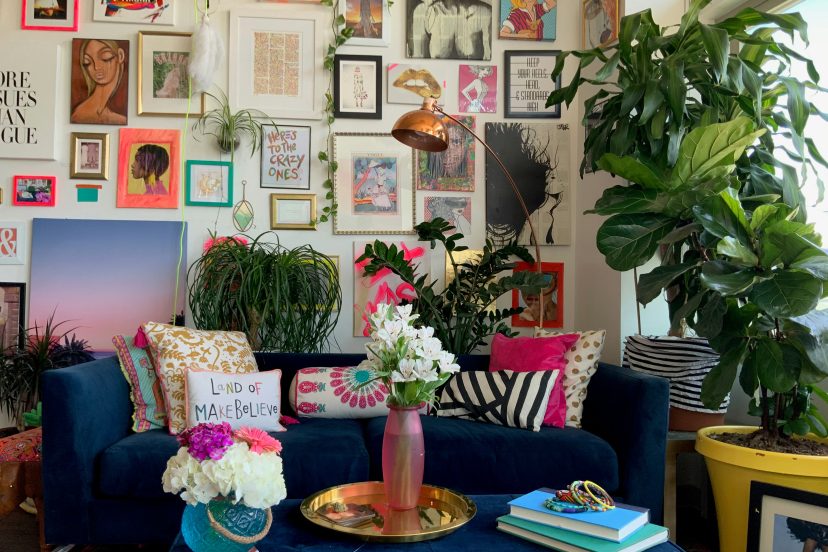
Why Choose Maximalist Decor Over Minimalism?
Minimalism had its moment, and it’s still a great fit for those who value serenity in simplicity. But for many of us, white walls and bare countertops can feel more like a hospital than a home. Enter maximalism—a lively, fearless, deeply personal approach to living spaces.
Here’s why more people are ditching the “less is more” mantra:
- Emotional depth: Maximalist decor allows you to surround yourself with meaningful objects—things that make you smile, think, or reminisce.
- Creative freedom: No rules, just rhythm. You get to blend styles, eras, and textures as you please.
- Mood-boosting impact: Studies show that colorful and sensory-rich environments can improve cognitive stimulation and reduce stress.
In fact, the Journal of Environmental Psychology found that personalized decor can lead to increased feelings of belonging and well-being—especially in home environments.
7 Tips to Master Maximalist Layering
1. Start with a Statement Piece
Before layering even begins, anchor your room with one strong focal point. This could be a velvet emerald green couch, a bold abstract painting, or a dramatically patterned rug. Think of this as your “main character”—everything else will support its story.
Helpful Tip: Pick something that feels meaningful or brings you joy. Design rooted in feeling always wins.
2. Mix Textures Like a Pro
Layering isn’t just visual—it’s also tactile. A room feels richer when you combine contrasting textures. Think: plush velvet meets rugged linen, glossy ceramics beside rustic wood, or sheepskin draped over leather.
Try this formula:
- One soft (like a throw or pillow)
- One shiny or reflective (like a metal tray or glass vase)
- One rough or natural (like rattan, wood, or jute)
Layer them in vignettes across your space—on coffee tables, shelves, or beds—and watch your room come alive.
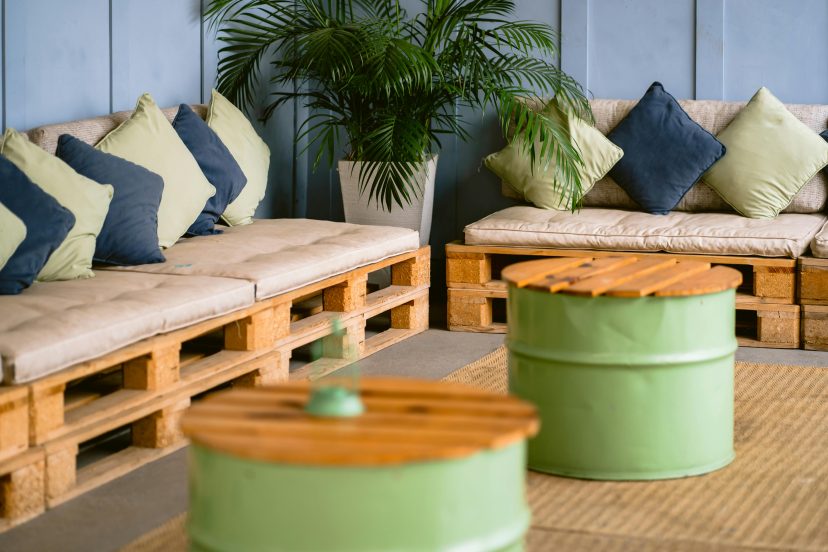
3. Layer Patterns with Intention
This is where maximalism gets its spice. But layering patterns isn’t about piling them on at random—it’s about rhythm and balance. Start with a large-scale pattern (like wallpaper or an area rug), then layer in smaller-scale prints like stripes, dots, or florals on pillows, curtains, or art.
Keep it cohesive by sticking to a color family. For example, if your large pattern is navy and rust, choose secondary patterns that pull from those tones.
Still unsure? Try the 70-20-10 rule:
- 70% dominant pattern
- 20% secondary pattern
- 10% accent pattern (the wild card)
4. Use Color to Create Rhythm
Color is the secret sauce of maximalist spaces. Instead of using it randomly, repeat key colors throughout the room to create flow. For instance, a mustard yellow lamp, chair pillow, and wall art detail can pull a space together without feeling matchy-matchy.
The 60-30-10 color guideline is a great way to keep your palette balanced:
- Use one main color for about 60% of the space, like on walls or big furniture pieces.
- Add a secondary color for 30%, such as curtains or rugs.
- Finish with a bold accent color for the remaining 10%, seen in decor, artwork, or pillows.
Don’t be afraid of bold hues. Maximalism thrives on vibrancy, and when colors repeat across different elements, the room feels intentional—not overwhelming.
5. Let Your Walls Tell a Story
A bare wall in a maximalist home is a missed opportunity. Instead of just one framed photo, create a gallery wall filled with pieces that span your life’s chapters. Combine framed art, woven wall hangings, vintage mirrors, postcards, and even hats or plates. Make it personal.
Before you hammer in nails, lay your collection on the floor and arrange it like a puzzle. Take a photo of the layout you love, then recreate it on the wall with painter’s tape as your guide.
Not only does it add visual interest—it turns your walls into conversation starters.
6. Incorporate Sentimental or Vintage Finds
Maximalism isn’t about buying more—it’s about layering meaning into your home. Pull in pieces that carry memory or soul. That could mean a vintage typewriter from your grandpa’s attic, a travel souvenir, or even a framed note from someone special.
Mix old and new for charm that doesn’t feel dated. A modern floor lamp next to a retro velvet chair? Chef’s kiss.
7. Embrace Organized Chaos
Here’s the truth: maximalism walks a fine line between expressive and overwhelming. The secret to staying on the right side of that line is structure. Try grouping your decor by color, shape, or a common theme. Leave breathing room between clusters. Use trays, books, and risers to create visual layers.
The goal? A curated, collected vibe—like the room grew over time, not like a store display.
Recommended Maximalist Decor Products
Ready to bring your space to life? These Amazon finds pair perfectly with the layered, vibrant aesthetic you’re building:
| Product | Why It Works | Link |
| Modern Velvet Sofa | Velvet texture + rich colors = instant focal point. | View on Amazon |
| Safavieh Madison Boho Area Rug | Provides the perfect foundation for layered patterns. | View on Amazon |
| Kate and Laurel Decorative Tray Set | Helps organize and style smaller items in clusters. | View on Amazon |
| Rivet Mid-Century Ceramic Vase Set | Easy way to repeat color and add texture. | View on Amazon |
| Gallery Wall Frame Set by Americanflat | Kickstart your storytelling wall. | View on Amazon |
Affiliate Disclosure: I may earn a small commission from Amazon purchases, at no extra cost to you.
Research-Backed Insights on Bold Interiors
Interior design does far more than beautify a room—it actively shapes how we feel, think, and function. Research supports the idea that intentional design can significantly enhance our mental well-being.
How Thoughtful Design Enhances Well‑Being
The article on the impact of interior design on wellbeing from InStyle Deco Paris makes it clear: well-planned spaces influence both mental and physical health. It highlights how elements such as color, lighting, layout, and texture can elevate mood, reduce stress, and foster a sense of comfort and belonging.
The Psychological Impact of Color and Chroma
A study published in Procedia – Social and Behavioral Sciences on the effects of color in interior environments confirms that color saturation (chroma) and hue have direct influences on emotional responses. Warm, high-chroma colors tend to evoke energy and excitement, while cooler tones can induce calm and relaxation.
How This Supports Maximalist Layering
- Embracing bold, high-chroma color combinations—a core feature of maximalist layering—aligns with research showing these designs can stimulate energy and creativity.
- Repeating specific hues throughout décor layers helps balance visual richness without overwhelming the senses.
- Incorporating textures, varied lighting, and curated décor—as recommended in the InStyle Deco Paris article—matches the core philosophy of maximalism: decor that resonates emotionally and visually.
In short, Maximalist Layering is about crafting spaces that support mood, creativity, and well‑being.
Final Thoughts
Maximalist layering isn’t just about design—it’s a personal expression of who you are. Every texture, color, and object adds depth and meaning to your space. A thoughtfully layered room invites creativity, comfort, and emotional connection. If you’re planning a refresh, even a simple home office upgrade can enhance both style and function. With the right balance, maximalism transforms any space into one that feels truly yours. So go bold, trust your instincts, and let your decor tell your story.
FAQs
1. Isn’t maximalism just clutter with a fancy name?
Not at all. True maximalism is curated and meaningful. It celebrates abundance, not disorganization. The difference is in the intention behind every piece.
2. Can I pull off maximalism in a tiny apartment?
Yes! Maximalism doesn’t require a mansion. Use vertical space, mirrors, and smart zoning to keep things from feeling cramped. Scale down your pieces, not your style.
3. How do I keep it from looking like a thrift store exploded?
Stick to a consistent color palette. Group similar items, vary your heights, and leave some white space. Maximalism thrives on balance and repetition.
4. Will my space feel overwhelming with so much going on?
Not if you plan your layout. Make sure every area has a visual anchor. Use rugs, shelves, and trays to create visual “zones” and avoid chaos.
5. Is maximalism sustainable?
Absolutely. Thrifting, upcycling, and showcasing what you already own make maximalist decor inherently more sustainable than fast-furniture minimalism.


